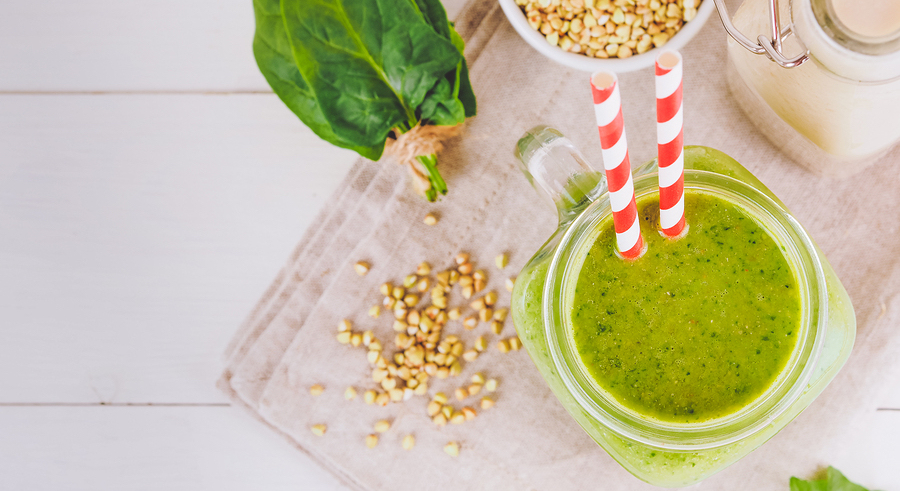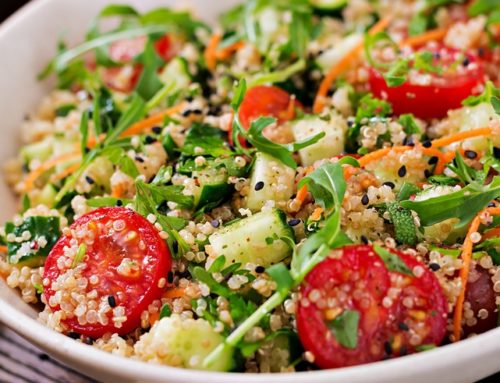Smoothies are delicious (and of course photogenic) but are they healthy? That depends. Be extra careful about smoothies you buy from a juice bar, cafe or restaurant. They may be adding juice or other ingredients that will leave you with a lot more sugar & calories than you want. For example, a Kale Kolada smoothie has 465 calories and more sugar than a Snickers bar. Take a peek at the tips below, and make a smoothie that your Nutrition Specialist would be proud of:
- Watch the portion size. Just because you can liquify five pieces of fruit into your glass, doesn’t mean that you necessarily should. Fruit contains quite a bit of fructose, or fruit sugar. While consuming it in an intact single piece of fruit is good, consuming multiple servings in liquid form might not be. Only put the amount of foods that you’d ordinarily eat in one sitting into your smoothie.
- Include vegetables. This is a great way to boost the nutritional value, without adding much in the way of sugar. Vegetables are high in vitamins, minerals, and other phytonutrients, as well as prebiotic fiber. So they nourish us and keep our gut happy, without sending calorie levels into the stratosphere. Some great options to try include tender leafy greens, squash, beets, yams, or carrots.
- Don’t forget protein. Ever find yourself hungry again, an hour or two after your morning smoothie? You probably forgot the protein. These complex molecules takes much longer to digest than the carbohydrates found in fruits and vegetables, so we feel satisfied for longer. Plus, they support the building and repairing of our lean body tissue. Great protein sources to try include plain Greek yogurt, cooked quinoa, peanut butter powder, or traditional protein supplements like collagen or whey.
- Watch the high fat ingredients. Calories can add up quickly, especially when adding a lot of high fat items. Foods like chia feeds, flax, avocado, coconut, and nut butters are highly nutritious, but also carry a heavy calorie content. For those on a lower calorie diet, try rotating what you add each time, and use smaller portion sizes to limit the impact.
- Keep it fresh. And by fresh, I don’t mean fresh produce necessarily. Frozen fruits and vegetables are just as nutritious, and can add a pleasing thickness to your smoothie. But do keep it fresh by trying out new recipes regularly. One of the keys to good nutrition is variety, so add different ingredients into your rotation often.
The bottom line? Smoothies can be a simple way to get a lot of nutrition in a short time. By so make smart choices. For more ideas, speak with a Nutrition Specialist, or visit the recipe section of the media library.





